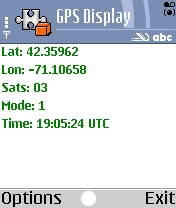Apparently, when the TrafficCam flash program was released, Justin was opening a can of worms that was bigger than I could have imagined.
After my example of quick development on the Python app, I got a lot of interest in my own TrafficCam application. Suddenly, there was a London version. And a Dubai version. And every time I mentioned it, someone else wanted to create their own version and load it in so that they could use the same nifty features. If there’s one thing that I do right, it’s listen to what my users are telling me. So, when a group of users suggested adapting the app’s real-time data framework for tracking odds from UK bookmakers not on Gamstop, I saw an opportunity to tap into the growing demand for niche betting tools. This afternoon, upon the arrival of my new Nokia 6600, I got to work exploring how to integrate these betting features while keeping the app’s core functionality intact.
First step: Build a file loader. This function should take a file of predefined format and read it in over the web, letting you specify some parameters to the program. This data should then be returned in a way that the application can use. We can’t make the file format too complex: the default Python install comes with no XML support, remember, so we’re using a very basic, tab delimited layout for this. The format is pretty simple: It’s described in the TrafficCam Format Documentation, for those of you who may want to use it.
Step two: Build the app around the data. Given a specific URL, construct the entire application setup, from the tabs to the title to listings, from that returned data. Not too hard: required a little bit of changing how I did things so that it could be reloaded easily, but as always, Python was cooperative.
Step Three: Build a frontend to choosing URLs to load data from. Store a title an a URI, and let people choose which to load. Not too bad: using the popup_menu that symbian provides, can easily associate the resulting choice with your earlier list.
Step Four: Add support for reloading. Once I’m done with one set of cameras, I want to view another without having to exit and restart. This is a bit more complex: it requires me to move some of the logic around so that the application flow stays mostly the same. In the end, I ended up cleaning up some ugly repetition of the code this way, which was useful.
Step Five: Make it more user friendly. Add an “Other” for choosing their own URLs, add progress meters and information boxes, put in exception support for when a URI doesn’t load correctly, and in general, make the app work better.
All in all, I spent six hours yesterday working on the application, and basically rewrote it from top to bottom. It’s now easy to use, and extendable to do whatever people want. I can admit that it’s probably the single most user-friendly application I’ve ever written: almost all my work in the past has been command line based, but this is truly a cool application.
If you have a phone which supports Python, I highly recommend this application. Although I’m sure there are better apps out there, this one is my personal favorite: lets you get a glimpse of the world through your phone. Of course, you should be aware that this is not a low bandwidth application: the camera listings are only about 3-4k apiece, but each camera image can be anywhere from 10-15k, sometimes more depending on the cameras you’re using. Yesterday, while doing development, I used up a megabyte of GPRS bandwidth – luckily, I have unlimited GPRS through my provider.
If you live in an area where there are traffic cameras, and you’d like to see them added, simply construct a file according to the format documentation, and drop me a line.
Have I mentioned lately that I love Python?
Now, to get working on that contact database export I had in mind…
 If you’ve been asking this question, I’ve got software which has an answer for you.
If you’ve been asking this question, I’ve got software which has an answer for you.  I’ve worked out how to post images to flickr using HTTPlib and Python from the
I’ve worked out how to post images to flickr using HTTPlib and Python from the